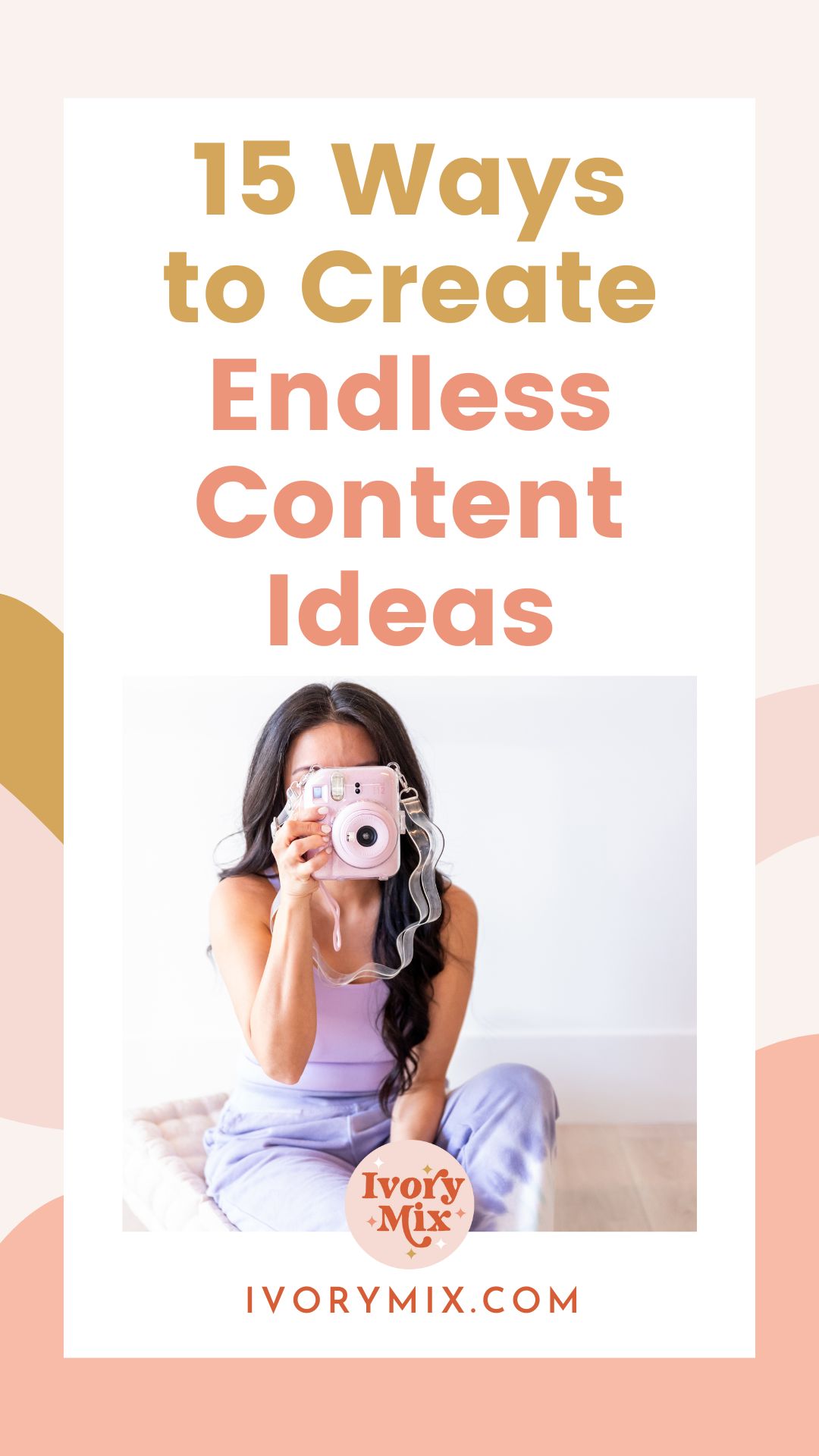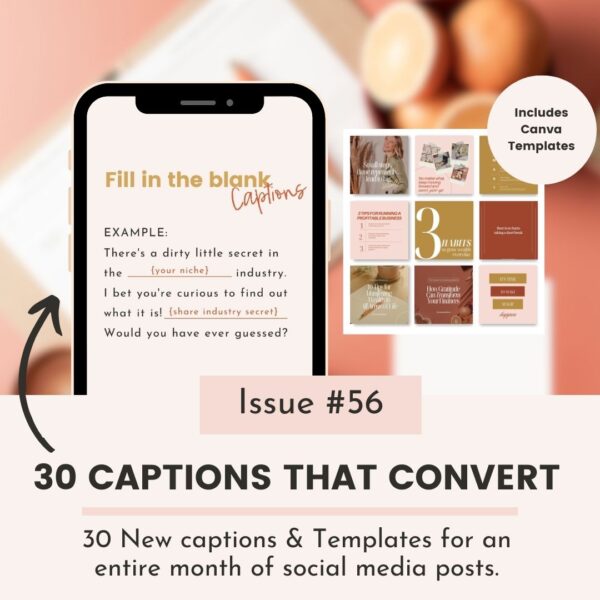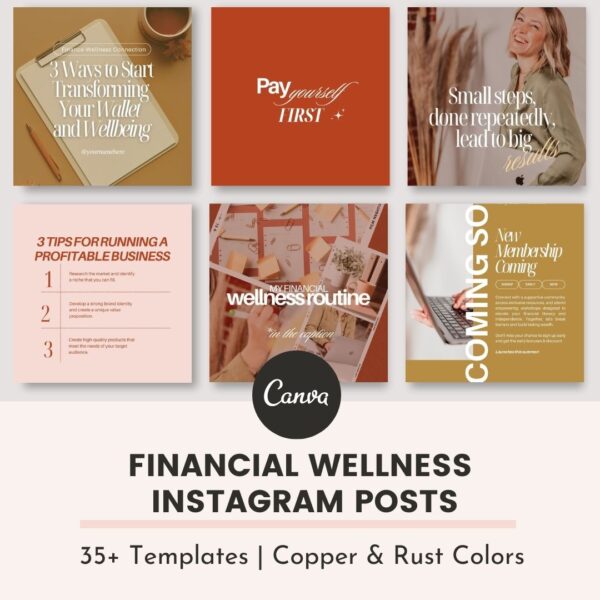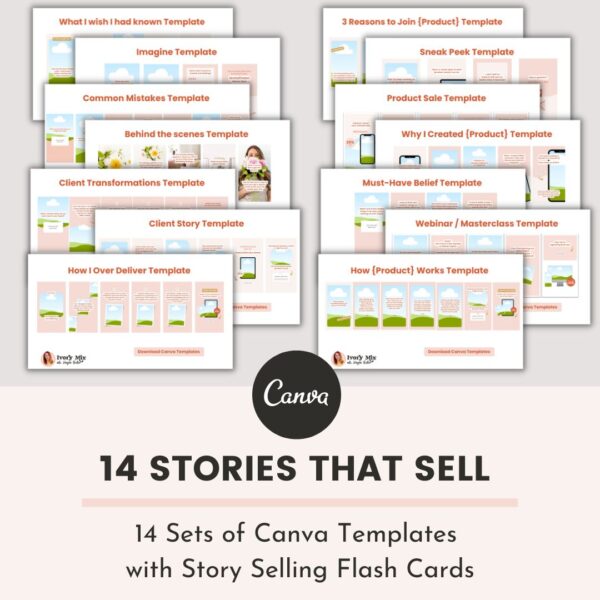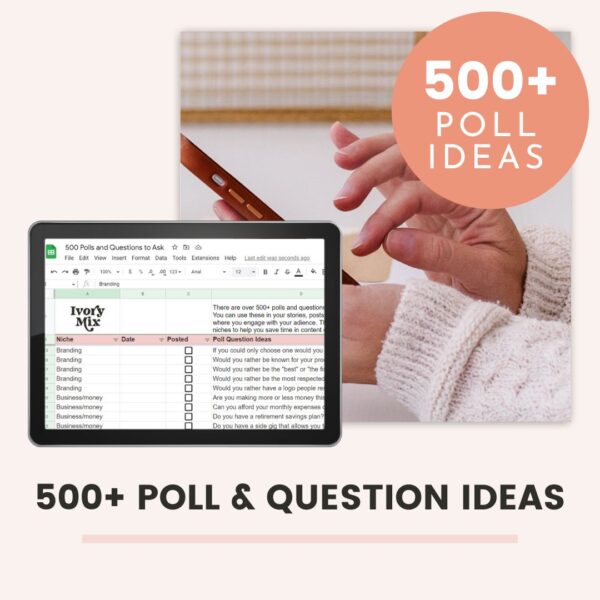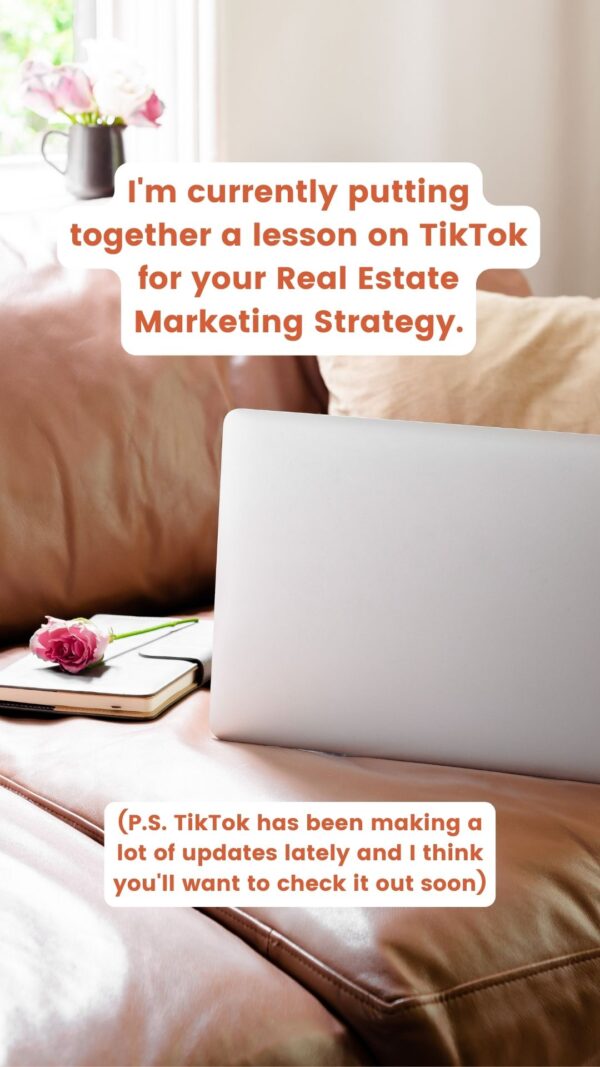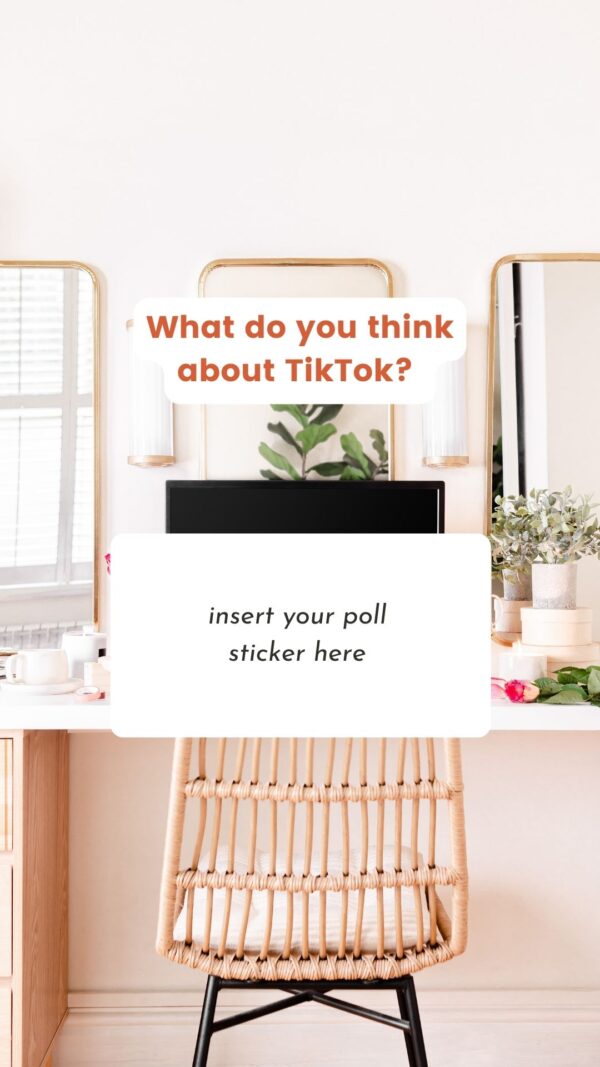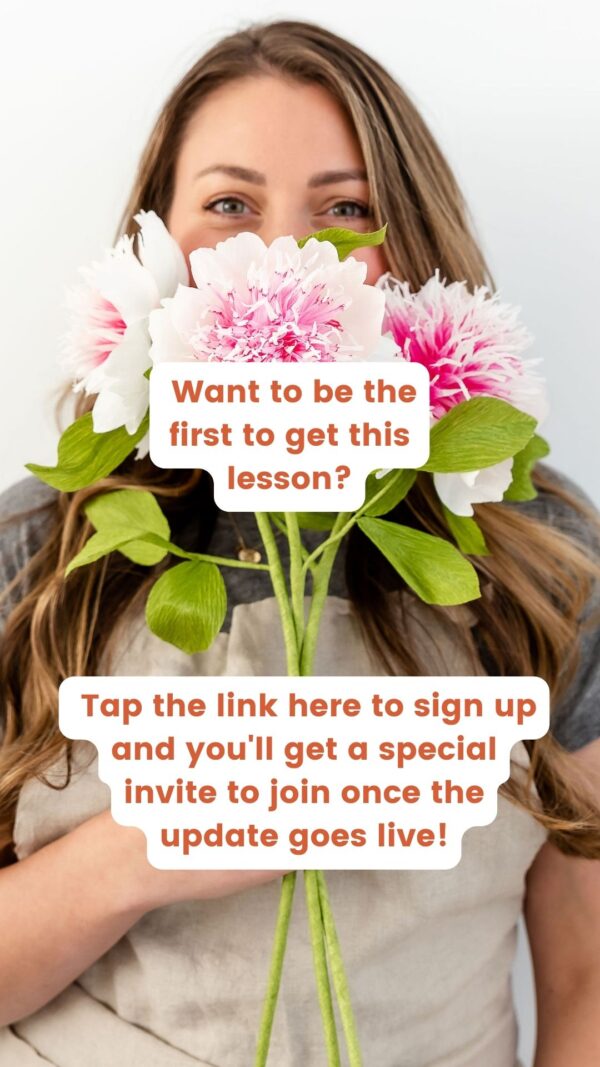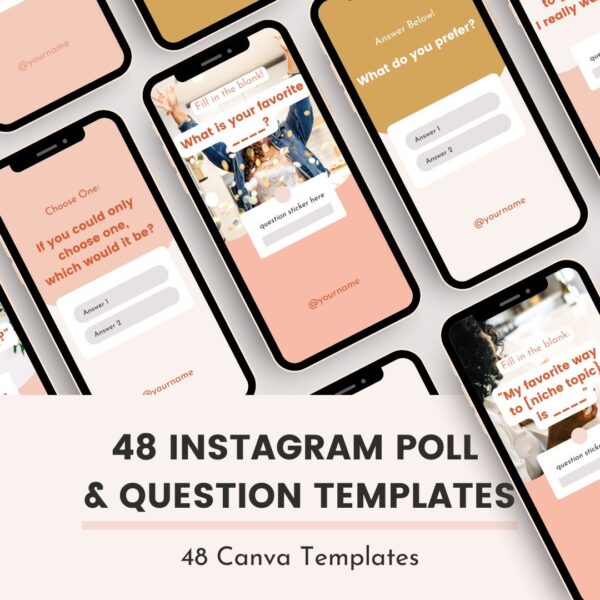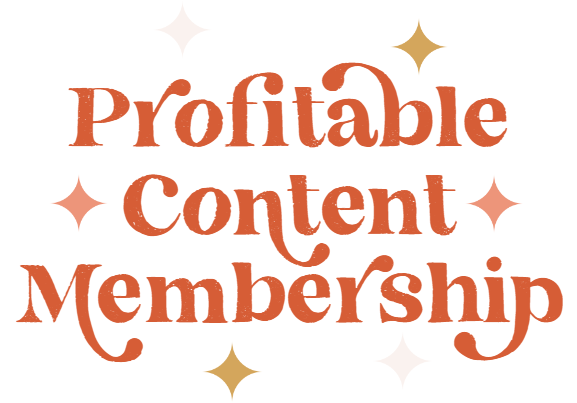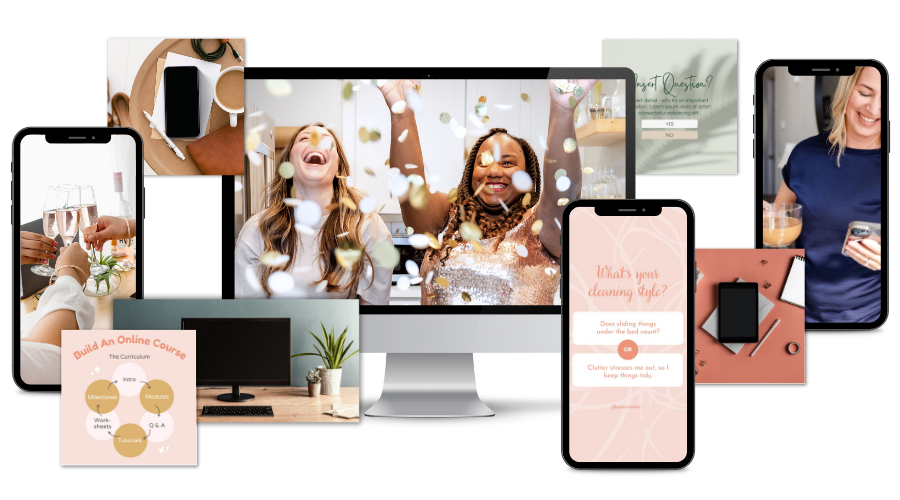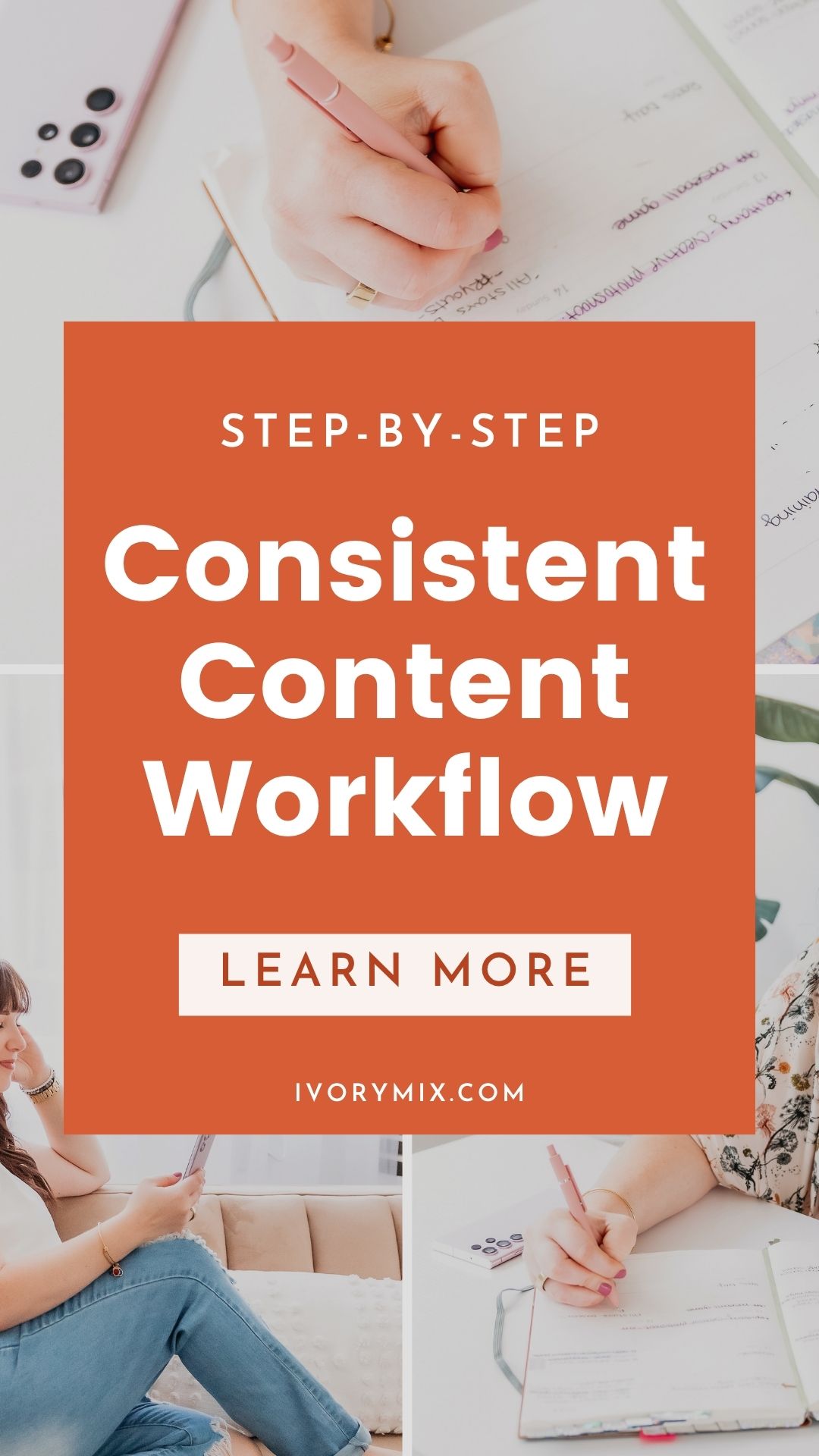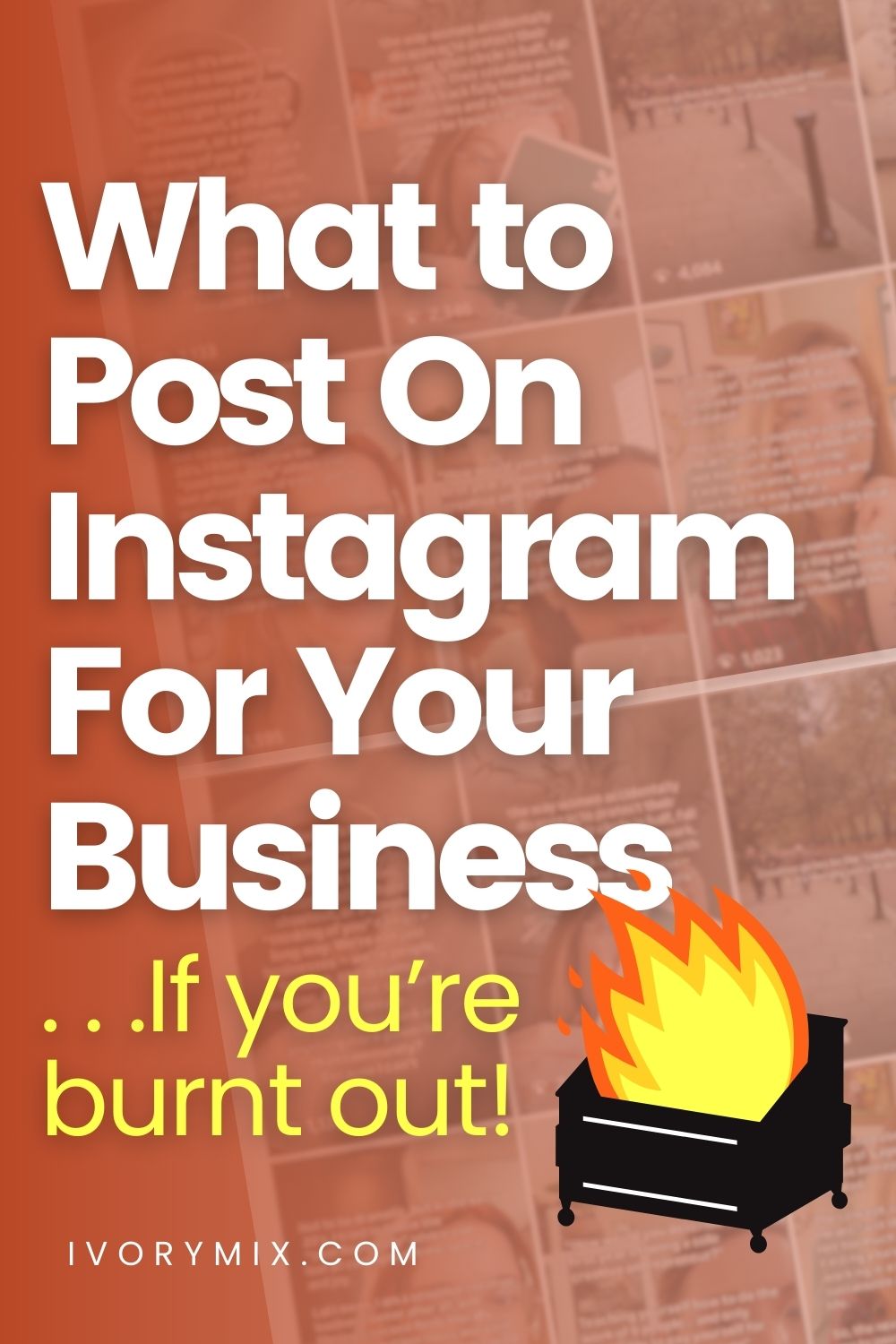get 500+ free images, templates & marketing strategies! You're one click away, Don't Miss It.
15 Unbeatable Ways to Come Up with Endless Content Ideas
This post may contain affiliate links. Please read the disclaimer
You know, finding new, exciting topics to write about can sometimes feel like a huge task. I mean, how many times have you sat in front of your computer, staring blankly at the screen, just waiting for that brilliant idea to hit you? But imagine for a second, there are 15 simple methods to use that could make this whole process so much easier and endless for you.
I’m going to share these 15 super straightforward strategies with you. They are so simple yet so effective, it might just change how you think about creating content.
Before we dive right into these methods, I’ve got a little something for you. I’ve put together a free resource
Make sure you Download this list of 700+ content ideas for your next content creation session!
Note: This week only, both the Elite and VIP Memberships are $10 off.
If building a consistent content system is on your list, now’s the perfect time to join and simplify your content planning. Explore memberships & save $10 →
Ready to find out what these methods are all about? Let’s get into it!
My 15 Methods For Generating Endless Content Ideas:
1. Look at Your Goals To Develop Content Ideas
Alright, first things first—what are we aiming to achieve? Increased engagement on your posts, pulling in a new crowd, or maybe highlighting some exciting products or updates? Clear goals give us a target to aim for and make the brainstorming process more directed. When you know exactly where you want to go, you can plan the best route to get there.
What does that mean for coming up with content ideas?
Easy – your goals help decide what kind of content you need. For example, if you want more engagement, you’d think about what gets people talking. Questions or controversial topics, maybe? If it’s a new audience you’re after, consider what they’re into, what problems they have, and how you can connect with them. And if it’s your products you want to highlight, think about how they fit into your audience’s daily life.
Your goals are the foundation for your content ideas. Here are a few content templates and ideas that align with each of these goals mentioned:
For Increasing Engagement
- What Do You Think? [Ask a question relevant to your audience]
- “What Do You Think? Is Coffee Better than Tea?”
- “What’s Your Go-To Comfort Food? Share in the comments!”
- This or That: [Two options related to your niche]
- “This or That: Summer Beaches or Winter Wonderland?”
- “Mac vs. PC: Which Do You Use for Graphic Designing?”
- Can You Believe This Happened? [Surprising fact or event]
- “Can You Believe This Happened? We Reached 10K Followers!”
For Attracting New Followers
- Beginner’s Guide to [Topic relevant to the new target audience]
- “Beginner’s Guide to Digital Marketing – Basics You Must Know”
- “Start Your Journey in Photography With This Beginner’s Guide”
- Secrets to [Desirable outcome] That Experts Won’t Tell You
- “5 Secrets to Perfect Skin That Beauty Experts Keep to Themselves”
- “Unlock the Secrets to Mastering Italian Cooking at Home”
- Why [Target new audience group] Love Our [Product/Service]
- “Why Millennials Are Choosing Flexible Workspaces Over Traditional Offices”
- “Why Adventure Travelers Love Our Eco-friendly Gear”
For Highlighting Products or Updates
- Just Launched: [New product or feature]! See How It Works
- “Just Launched: Our Latest Skincare Line! See How It Works”
- “Introducing Our New App Feature! A Quick Tour”
- Behind the Scenes: Making of [Product/Service]
- “Behind the Scenes: How We Craft Our Handmade Jewelry”
- “A Look Inside: The Making of Our Award-Winning Cheeses”
- [Product name] vs. [Competing product]: A Detailed Comparison
- “Our Model X vs. Brand Y’s Model Z: A Detailed Comparison”
- “Compare for Yourself: Our Software vs. Others on the Market”
- How [Product/Service] Can Help You Achieve [Desirable outcome]
- “How Our Time-Management Tool Can Help You Achieve Work-Life Balance”
- “Discover How Our Fitness Gear Can Take Your Workout to the Next Level”
Each of these incorporate the specific goals mentioned, ensuring that the content is not just thrown out there but is strategic.
2. List Key Themes and Events for Content Ideas:
What’s happening in your world? Any big holiday coming up, or maybe it’s the season when your product is a must-have? It’s time to jot these down because trust me, they’re gold for sparking content ideas.
Imagine you’re a fitness coach and it’s the start of summer. That’s the start of a theme. You could focus on themes like getting beach-body ready or healthy outdoor workouts.
Here’s a little how-to on making this method work for you:
- Grab a Calendar: Look at the upcoming months. Mark down the holidays, seasons, and any events (both global and local) that align with your brand and audience’s interests.
- Match Your Products/Services to the Calendar: Now, think about how what you offer fits in with these dates or seasons. Got a summer workout planner? Perfect for those ‘Get Fit for Summer’ posts as the weather warms up.
- Brainstorm Content Ideas: With each theme or event, brainstorm a few content ideas. If it’s Earth Day, and your brand is all about homeschooling, plan posts that highlight your earth science or gardening related products for a related spin.
- Create a Content Bank: Keep a document or spreadsheet where you jot down all these themes, events, and the ideas you’ve brainstormed. Whenever you’re stuck for what to post, this ‘content bank’ is your go-to.
Remember, your audience will relate better when your content aligns with what’s on their minds, like seasonal changes, holidays, or major events. It makes your brand feel more in touch and timely, which can seriously boost how your audience engages with your posts. So, don’t miss the chance to harness the power of timely themes and events in your niche.
3. Keep a Content Calendar to Capture Your Content Ideas
So you’ve got this awesome list of themes and events that match perfectly with your business. Now, let’s talk about keeping everything organized. It’s time to whip up a content calendar. This is basically just a schedule of all the stuff you’re planning to share with your audience.
Think of your calendar as a big-picture planner. It helps you spread out your ideas so you’re not bombarding your followers with too much stuff at once or leaving them hanging with too little. Plus, you can see at a glance if you’ve got a good mix going on or if you need to shake things up a little.
Here’s how to start getting your content calendar set up:
- Pick Your Tool: Whether it’s a paper planner, an online calendar, or a spreadsheet, find something that works for you.
- Plot the Big Stuff: Start with the key dates we talked about—holidays, events, product launches—put them into your calendar first.
- Fill in the Gaps: Now, take those content ideas you had for each theme and start scheduling them around those key dates. Aim for a steady rhythm, so there’s always something fresh for your followers, but not so much that it’s overwhelming.
- Be Flexible: The best part of having a content calendar is that it’s not set in stone. If something new pops up, like an unplanned event or a hot topic that just can’t wait, you can adjust your calendar to fit it in.
For example you could plan your content with our 4 Week Content Planner. It’s easy to use right inside google sheets! Making it simple to track content ideas and everything for 4 weeks and then start again the next month.
A content calendar will keep you on track, which means you’re always where you need to be—right in front of your audience with great content they’ll love. Plus, it takes away the stress of last-minute scrambling for post ideas. Now, isn’t that a relief?
Want a place to start with a content calendar?
Make sure you Download a copy of my free content planner for your next content creation session!
💡 Bonus tip: When you plan your Content Planning Day, don’t start from scratch.
This week, the Ivory Mix Membership is $10 off, giving you instant access to plug-and-play systems, templates, and planning tools that make staying consistent easier than ever.
→ See what’s inside + get $10 off
4. Mind Mapping for Generating Endless Content Ideas
Okay, let’s get those ideas of yours down in a way that’s easy to see and understand. We’re talking about mind mapping—a really straightforward way to visually organize your thoughts. You start with one of the themes or events you’ve picked out and then branch out from there into various content types.
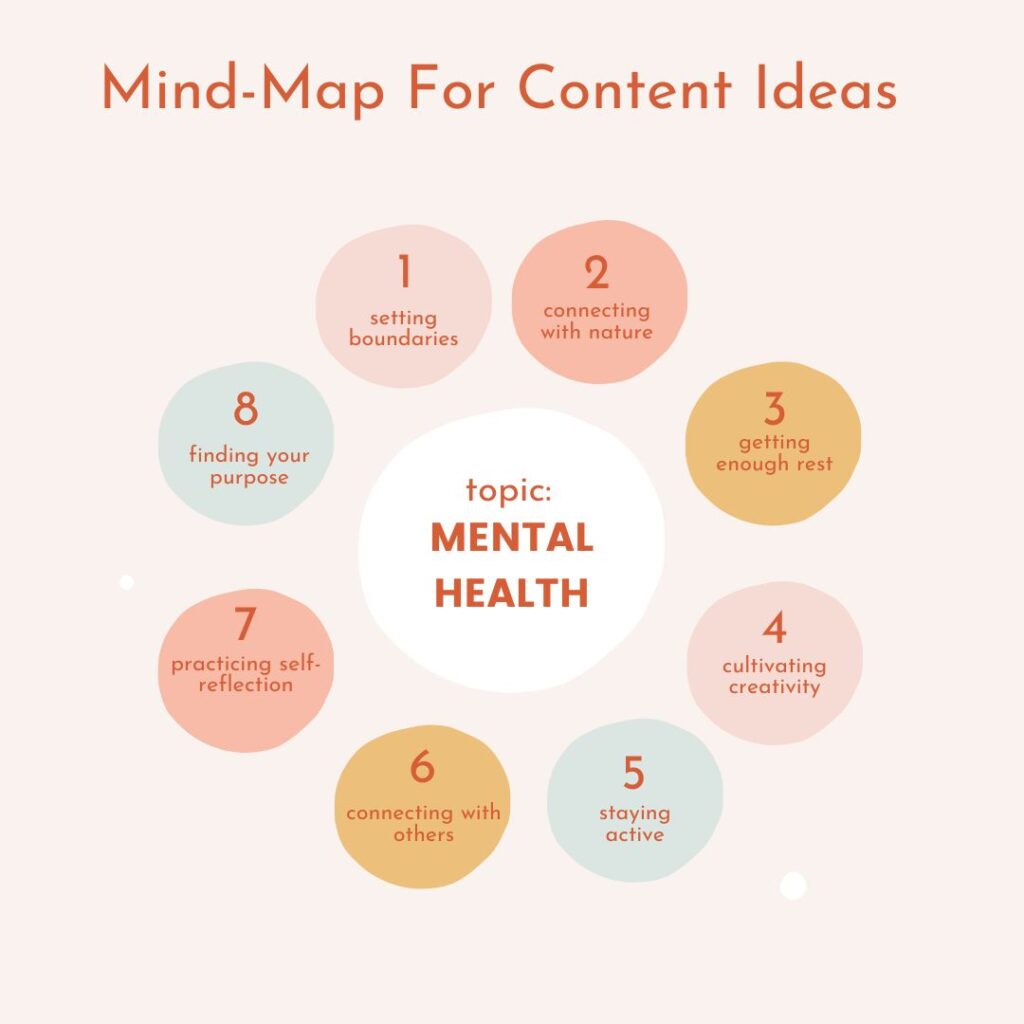
Here’s how you can do it:
- Start with a Central Idea: Put the main theme or event in the middle of a page or whiteboard. Say, it’s “Winter Skincare.”
- Branch Out with Content Types: Draw lines out from the center and label them with different types of content you could create. For “Winter Skincare,” you might have lines for a blog post, a video tutorial, a poll on social media, etc.
- Expand Each Branch: Take each content type and break it down even further. If we’re looking at the blog post branch, what specific ideas can you come up with? Maybe a “Top 5 Winter Moisturizers” article or “Common Winter Skin Problems and How to Avoid Them.”
- Get Specific: Now, under each of your expanded branches, get into the nitty-gritty. What will the “Top 5 Winter Moisturizers” article include? Which products will you feature, and why?
This method is awesome because you can visually see how many different pieces of content can come from just one idea. Doing a mind map for each theme or event you’ve identified means you’re never short of new stuff to share. It’s a great way to ensure you have a wide variety of content, which keeps things interesting for you and your followers.
Plus, it’s a lot of fun to do! Grab some colorful pens, get creative, and before you know it, you’ll have a whole web of content ideas ready to go.
5. Use AI to generate content ideas
Here’s what you can do if you’re looking for a simple way to generate content ideas with the help of Ai:
- Write down a few of Your Initial ideas, themes, events, or topics: Start by jotting down all your current ideas, no matter how rough they might seem. Just get them out of your head and onto paper, or better yet, type them out on your computer.
- Use an AI Tool:
This step is where things get interesting. You would simply input a request like this: “Here are my initial ideas about various content ideas, blog posts, and content topics. Can you expand on these or offer some variations?” Input these ideas into your AI tool. You could use Chat GPT but there are several platforms out there. - Expand and Refine:
Once the AI spits out variations and expansions on your original thoughts, take a look at them. You might find new angles or improvements you hadn’t considered. - Iterate:
Don’t stop at the first round. You can repeat this process, taking the enriched ideas and feeding them back into the AI tool to go even deeper on the topic or broaden your perspective even further. - Organize:
After several rounds, you’ll likely have a bunch of ideas, some of which might be pure gold. Organize these in a way that makes sense to you—perhaps categorizing by theme, potential, or ease of implementation.
Using AI can open up a surprisingly large chunk of ideas you might not have come up with on your own. It’s awesome for breaking out of your normal thought patterns and discovering new possibilities.
6. Draw Inspiration from others to generate content ideas:
This involves a bit of exploration. Think about the kind of content that catches your eye when you’re scrolling through your feed or when you’re casually browsing the internet. It could be anything — a captivating blog post, an eye-catching photo on Instagram, a compelling video on YouTube, or even an innovative infographic. Now, spend some time really diving into these pieces.
What is it about them that grabs your attention?
For me, it often boils down to a few key things you might want to also take note of:
7. Get Ideas From The Storytelling You See Around You:
There’s something incredibly powerful about a good story. It’s the stories that make us stay, read, watch, or listen to someone’s content. It’s not just about what is being shared, but how it’s being shared. Take note of how they are framing their story-telling and consider this inspiration for sharing and structuring your own stories.
Here are some examples and potential ideas or inspiration you may stumble upon that you can adapt to fit your niche or personal experience:
- “How I Overcame [Challenge]” – Invite your audience into a personal story that highlights a challenge you faced, how you tackled it, and the valuable insights gained.
- “A Day in the Life of [Your Role or Hobby]” – This template allows you to take your audience through a typical day, weaving in stories that reflect broader themes or lessons.
- “From [Past Situation] to [Current Success]: My Journey” – Share the evolution of your career, hobby, or personal growth, giving your audience a narrative arc they can follow and learn from.
- “Mistakes I Made in [Aspect of Your Life/Work] and How I Fixed Them” – This is a great way to connect through shared struggles and showcase your problem-solving ability.
I always try to inject a bit of my personality into my storytelling content. I think about what aspects of my experiences or insights could make the information I’m sharing more relatable or engaging. Take a look at your past content ideas and see if there’s a story-telling component you could add to it or expand from it.
8. Get Content Ideas Inspired By The Visuals You See Around You:
Ever find yourself scrolling through Instagram, stopping not because of what the post is about, but because the colors just pop, or the way everything is laid out just grabs your attention? It’s cool how just the look of something can spark an idea, isn’t it? And guess what? You don’t need to stick to your usual topics to get inspired. If it catches your eye and gets those creative juices flowing, it’s doing its job.
Let’s say you come across a post with a really cozy, warm color scheme. You think, “Wow, this makes me feel right at home.” Why not take that feeling and write a blog post about ways to create a cozy vibe at home? Or, you spot a super minimalist and clean photograph that somehow makes you think about simplifying life. Boom! There’s another idea: “Simplifying Your Morning Routine for a Stress-Free Day.”
Or maybe, you see a photo of a beautifully organized desk that makes you want to sort out your own workspace. That could lead you to create a video or write an article on “5 Easy Tips to Organize Your Desk and Boost Productivity.”
It’s all about letting those visuals feed your creativity. It doesn’t matter if that stunning sunset photo doesn’t have anything to do with your usual content about tech gadgets. Maybe that sunset inspires you to write about “Tech Gadgets to Capture the Perfect Sunset,” combining your niche with new, visually inspired ideas.
Keep your eyes open, let the colors and layouts around you feed into new and exciting content ideas. Sometimes, the best inspiration is just a scroll away.
Or, you could just skip that process and look for PLR content to rebrand like this branding blueprint from the PLR category inside my profitable content membership.
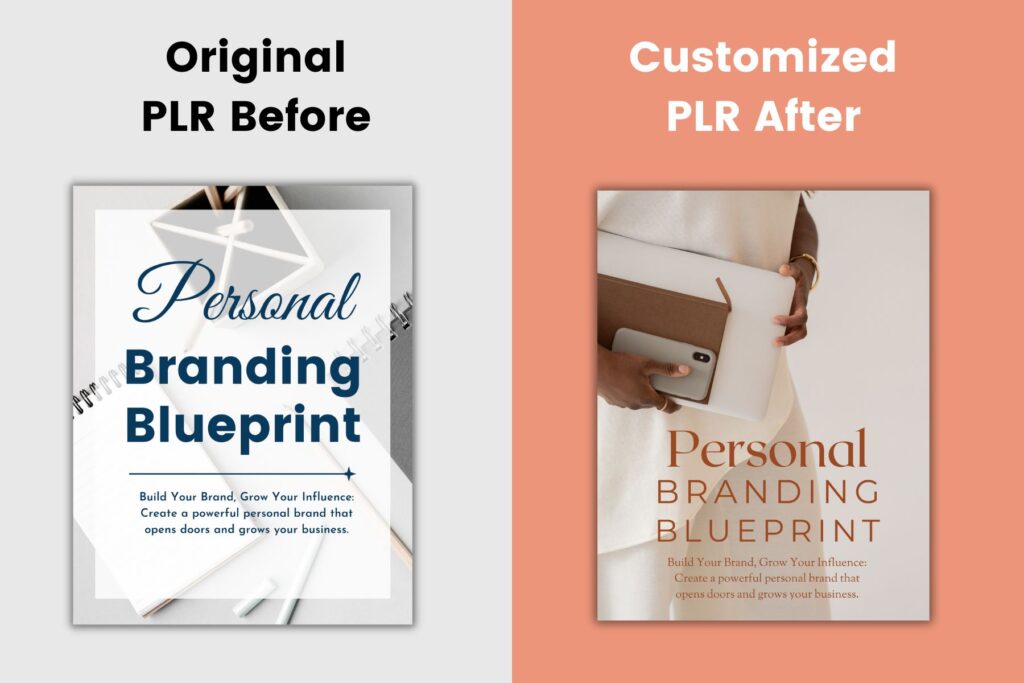
9. Get Inspired By Someone’s Content by Adding Your Own Unique Angle:
First off, this isn’t about copying. Far from it. It’s about discovering content from someone else and letting pieces of their content resonate with you and spark something new in your own thoughts and content.
For instance, perhaps you find a blogger who shares tips on productivity. You’re impressed by their post on “10 Ways to Start Your Morning for a More Productive Day.” You think, “That’s great, but what about night owls like me?” Here’s your angle: You can write a post titled “10 Night-Time Habits for Morning Productivity: A Guide for Night Owls.” You’ve taken inspiration, but you’ve tailored it to suit a different audience with your unique spin.
The next time you stumble across a new topic, idea, or content from a creator in your niche, think about how you can create a content idea inspired by their content but with your own style, angle, and perspective. It might mean a bit of deep thinking and getting those creative gears turning. But when everything clicks and you come up with a new angle on an idea someone else covered, it feels good.
In fact, most art is made this way. The key here is authenticity. Stay true to yourself and what you believe in. That’s the magic ingredient that makes people connect with your content. After all, people come for the topic, but they stay for your unique take and personality.
10. Self-Reflect to Generate Content Ideas:
When trying to come up with new blog ideas, I like to think about what you, my readers, seem to enjoy the most based on our interactions. I try to really listen and understand what’s on your mind when we chat.
Here are some of the questions I ask myself that you can ask yourself too:
- What topics does my audience ask about often? This helps me get a sense of what sparks your interest or what information you’re looking for.
- What challenges are my audience facing? If I know the hurdles you’re encountering, I can tailor my posts to offer solutions or advice that might help ease your struggles.
- How can I use my knowledge to assist my audience in achieving their goals and aspirations? Sharing my experiences and the expertise I’ve built up over time could provide you with the tools or knowledge you need to succeed.
Stuck with how to ask questions? Try these 500 poll ideas:
To keep your brainstorming sessions efficient and on track, try setting a timer. This will help you maintain focus and prevent overthinking. Aim for generating ideas that are engaging and genuinely useful for your audience.
11. Ask Your Audience For Content Ideas:
Sometimes, the most straightforward approach gives the best results. For this you can use simple tools — like conducting polls on Instagram stories, engaging with your Facebook group, or asking questions in your YouTube community section.
Crafting the question is an art in itself. After all, the better you ask, the better your audience can answer.
Here are a few examples questions and polls you can use:
Ideas for Instagram Story Polls:
- Which topic do you want to learn this week? Poll: Instagram Stories 101 or Facebook Stories 101
- What kind of DIY tutorials would you like to see? Poll: Home Decor Projects or Upcycling Furniture
Questions for Engaging Your Facebook Group:
- I’m planning my content calendar and I’d love your input. What are your top challenges when it comes to [your niche/topic]?
- We all have those burning questions we hesitate to ask. What’s yours in the realm of [your niche/topic]?
Questions for Your YouTube Community Section:
- As we’re gearing up for new content, it’d mean a lot if you told us: What’s the one topic you feel isn’t talked about enough on this channel?
- I need your help! What tutorial should I make next: [Option A] or [Option B]? Feel free to drop more suggestions in the comments!
Remember, these questions are just starting points. When you know your audience, you can tailor these to fit them perfectly. The key is to be open, show genuine interest in their needs, and be ready to listen to what they have to say. Open-ended questions tend to solicit more detailed responses, while polls are great for quick, decisive insights. No matter which you choose, these are a great way to get a sense of their current interests and struggles.
12. Explore Facebook Groups For Content Ideas:
Have you ever thought about how much we can learn just by hanging out in Facebook groups where our audience hangs out? It’s pretty straightforward. Simply join these groups and start paying attention to what they are talking about, even asking the same questions we talked about above could work, or simply just looking at the comments sections and discussions of someone else’s posted question.
This way, you can get a real slice of life from your actual audience by being in their world and seeing what they’re talking about. By doing this, you get a ton of ideas on what to write about. It can also make your content more relevant because it directly addresses the needs and questions of your ideal audience.
13. Repurpose Existing Content for new content ideas:
You could just keep it simple by giving your best content a fresh update or spin, instead of generating all new ideas. You know those videos, blog posts, or Instagram posts that really hit the mark with your audience? There is no reason your past content should gather dust and only be useful to you once. Instead, think about how you can bring them back with a fresh update.
A great place to start is by taking a look at your top-performing stuff. Could you add fresh information or more details to make it even better? Or what about transforming the main points into something new—like turning a blog post into a quick how-to video?
By updating and changing the format of your content, you’re not just recycling old stuff; you’re giving your audience more of what they already love. Plus, it’s a smart way to stir up new content ideas that are sure to capture their interest since they liked the original so much.
14. Look through YouTube Recommendations for content ideas:
Take a peek at your YouTube recommended page – it’s a great tool for ideas. See what’s being suggested to you and jot down what jumps out. These recommendations are clues about what interests people right now.
Plus, you’ll want to check out what competitors in your niche are up to as well. What are they talking about? Which of their videos are getting lots of views and comments? This can show you what you might be missing or spark an idea for a new take on a familiar topic.
Make sure to add your own twist to whatever you find. Your content should always have a bit of ‘you’ in it—a reason for people to come back for more. Remember, like I mentioned before, we’re not copying; it’s about finding ways to stand out with new content – your content. Keep it original and inspired by the title, not copied!
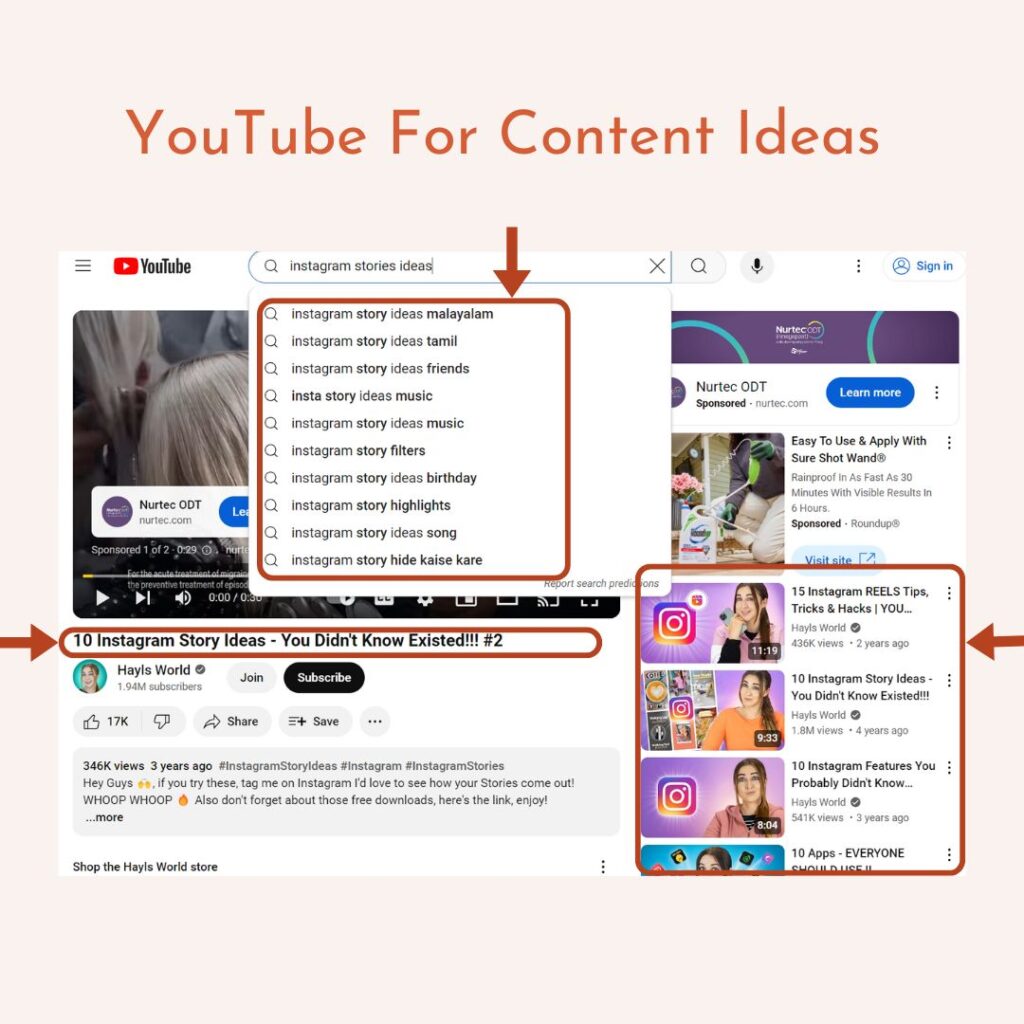
15. Go through Search Engine Results for Content Ideas:
Search engines like Pinterest and Google can be like personal assistants when it comes to finding what people are curious about.
To do this, you will start with a topic that matters to your audience and begin typing it into the search bar. Pay attention to the list of suggestions that pop up because those are the actual terms and questions people are looking for.
Another step is to look at the section that is titled “People also searched for”.

When you see the common questions and terms related to your area of expertise, you’ve got a list of what to cover in your content. Write about these topics, and you’re already ahead because you know there’s interest.
Bringing It All Together
And there we have it, friends – my list of 15 tried-and-true methods for creating an endless suply of content ideas. By now, you should feel equipped with a variety of strategies to keep your content fresh, relevant, and engaging.
don’t forget!
Make sure you Download this list of 700+ content ideas for your next content creation session!
💡 Bonus tip: When you plan your Content Planning Day, don’t start from scratch.
This week, the Ivory Mix Membership is $10 off, giving you instant access to plug-and-play systems, templates, and planning tools that make staying consistent easier than ever.
→ See what’s inside + get $10 off
What’s Next? Keeping the Ideas Flowing
Now that you’ve got these content-generating strategies, it’s time to put them into action.
I can’t wait to see the fantastic content you’re going to create. Go ahead, make waves with your words and visuals. Happy creating!
Ready to instantly improve your content and marketing without the overwhelm? Join us at Ivory Mix’s Profitable Content Membership for templates, strategies, and community support designed to streamline your content creation and boost your motivation and profitability.
To start saving time and creating more engaging content – sign up here.
Continue Reading More On This Topic:
- 5 Evergreen Content Examples for Instagram (and how to get started)
- 6 Content Ideas to Attract Your Dream Customers to Your Digital Product Business
- Creating digital products? Ask your followers these 5 questions
- 12 Content Ideas to Post When Launching Your First Digital Product, Course, or Service
- 50 Text-Only Reel Ideas for Introverts to Grow a Digital Product Business on Instagram!
- Create Content Faster with your own Content Planner and Playbook

Included Free:
550+ Templates, Photos, & Strategies
Get New Free Downloads Monthly
Unlimited Downloads
Special offers & Trends Newsletter
Save and sort your favorites
Access 500+ Free Templates, Photos, & Strategies With A Free Account
Free User Creation for Popup
By creating an account, I agree to Ivory Mix's Website terms, Privacy Policy and Licensing Terms
Already have an account? Log in


